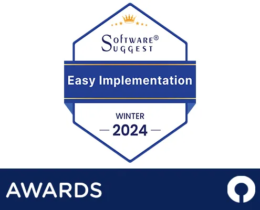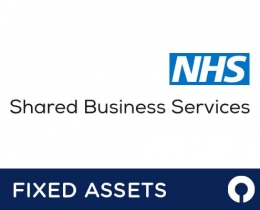The Difference Between Stocktaking and Stock Checking
Stocktaking vs stock checking: what’s the difference and which do you need?

Stocktaking vs stock checking: what’s the difference and which do you need?

From manufacturing to eCommerce and food distribution to retail, any business with large quantities of stock and inventory needs to effectively manage its goods. The first step in managing and optimising inventory and stock is gaining visibility over these current assets, however, this is no small task. Today, we’ll take a look at two methods of keeping track of a business’ goods: stocktaking and stock checking. Here’s everything you need to know about these two methods and how the right software can help you carry them out effectively.
Stocktaking, sometimes also referred to as stock counting, is the process of manually counting and valuing a business’s entire inventory of goods. The stocktake is an essential part of inventory management, influencing purchasing, production, and sales processes.
Stocktakes do not only look at the quantity of items in your inventory, but also consider the condition of items. This means checking that items are in suitable condition to be sold.
There are a few different methods of stocktaking, including:
Annual stocktaking is a procedure carried out once a year and is often necessary for financial reporting purposes. It may be part of the process of ensuring that gross profit margins and pricing strategy are satisfactory.
Periodic stocktaking is done at regular intervals, such as monthly, quarterly, or half-yearly. This type of stocktaking involves checking the entire inventory stock and is and is essential for maintaining inventory accuracy throughout the year. This method of stocktaking is beneficial because it reduces the risk of errors and discrepancies going unnoticed for a long time.
Continuous stocktaking is an ongoing process that uses technology such as barcodes and RFID to track inventory in real time. Up-to-date information about stock levels and movements allows organisations to identify issues immediately. This system of stocktaking is sometimes called perpetual stocktaking because it happens continuously every day.
Spot checks are random checks of inventory levels which are conducted on an ad hoc basis. This method of stocktaking helps businesses identify and correct discrepancies such as lost or stolen items which would not be otherwise noticed until the next periodic stocktake.
Stocktaking has a range of benefits, most notably that it provides a comprehensive and accurate overview of a business’ inventory. This up-to-date information is essential for financial and tax reporting, moreover, it allows for more accurate forecasting and planning for the future. For example, the quantity of particular items currently in the warehouse helps forecast future purchasing needs and informs warehouse management.
Finally, an effective stocktake allows businesses to ensure that the existing quantity of stock reflects the recorded quantity, allowing for easy identification of discrepancies due to stock loss or theft.
However, there are also some downsides to stocktakes. The biggest disadvantage that many businesses with large inventories may face is that the process is time-consuming and may even disrupt normal business operations. Without effective management, this process can lead to delays and dissatisfied customers.
Furthermore, manually conducted stocktakes tend to be prone to human error. Errors may stem from miscounts where items are overlooked or counted multiple times, inaccurate recording of item quantities due to mistyping or unclear handwriting, and even discrepancies resulting from items being put back in the wrong place. For these reasons, technology-enabled stocktaking using barcode scanning or RFID can be useful to reduce the risk of errors.
Now that we’ve covered stocktakes, let’s take a closer look at stock checking.
Stock checking, sometimes also called cycle counting, is the process of verifying inventory levels for a specific item or group of items. Because it looks at a smaller subset of the inventory than stocktaking, stock checking is often done on a more frequent basis. It may be conducted manually or using technology such as barcode scanners. The purpose of stock checking is to ensure that stock levels are sufficient to meet customer demand.
Quicker and easier to carry out than full stocktakes, stock checks allow businesses to closely monitor particular high-value items or in-demand products to ensure that stock can always meet sales demand. This means that businesses can make informed decisions about stock purchasing and forecast future demand in order to reduce the risks of stockouts or overstocking.
Because these checks focus on a smaller subset of stock, they are also less likely to be disruptive to normal business operations and can therefore be carried out frequently. As a result, stock checking can effectively reduce discrepancies and inventory record errors.
However, much like stocktakes, stock checks also have their downsides. While they are useful for maintaining visibility over key high-value or in-demand products, these checks naturally cannot provide an overview of the whole inventory. As a result, discrepancies relating to less valuable items may slip through.
Moreover, stock checks can still be time consuming and resource-intensive to complete. There’s a risk of stock items being put back in the wrong part of the warehouse or damaged during frequent stock checks, plus the routine nature of the checks may lead to human errors and oversights due to not paying close attention.
For many businesses, balancing stocktaking and stock checks is ideal to reap the benefits of both processes. These two processes can complement each other, allowing for comprehensive visibility over total inventory as well as greater control over particular high-demand and high-value items. Finding the right balance of the two processes can help organisations achieve better inventory accuracy, forecast and plan for the future, and make data-driven business decisions.
Even with the perfect balance of stocktakes and stock checks, there’s still a real possibility of human error and delays due to disrupted business operations. For this reason, growing numbers of businesses are turning to stock and inventory software to enhance inventory tracking.
FMIS Stock and Inventory software offers a range of benefits, including:
Because the software integrates with FMIS Asset Tracking solutions like barcode scanning and RFID tags, businesses can streamline inventory tracking. FMIS software allows businesses to track and manage completed inventory and record stock held at bulk, batch, and serial levels. It also enables the creation of tracking ID numbers for inventory, ensuring accurate tracking and traceability throughout the supply chain.
Businesses can gain valuable insights from stock and inventory software that provides real-time data on inventory levels, trends, and movements. Analytics and forecasting allow businesses to make data-driven decisions for more efficient stock control and management. By analysing past data and trends, FMIS Stock and Inventory software helps predict future inventory needs to ensure that stock can always meet demand.
With automated inventory tracking, you can instantly record information about inventory levels and movements using barcode and RFID scanners, reducing the time-consuming process and risk of human error associated with manual data entry. This means more accurate stocktakes and checks, boosting efficiency every time.
Inventory control features prevent expired or dead stock, minimising waste and freeing up warehouse space for valuable inventory. Using powerful stock and inventory management software also streamlines purchasing with the ability to auto-generate bulk purchase orders with configurable reorder points and thresholds. Preventing stockouts and improving supply chain management boosts efficiency throughout operations.
FMIS software is modular, with solutions for fixed asset accounting and tracking, equipment maintenance, lease accounting, and more. This means that your software for stock and inventory management integrates directly with your other solutions as well as your existing ERP or finance systems.
Considering using FMIS software to boost efficiency and gain complete control over stock and inventory? Get in touch with us today or book your software demo to find out more.
For more information on how FMIS can help you effectively track and manage your assets and equipment, please get in touch with an FMIS consultant or call us on +44 (0) 1227 773003.




FMIS Ltd
167b John Wilson Business Park
Whitstable
Kent
CT5 3RA
United Kingdom
Phone:+44 (0) 1227 773003
Fax:+44 (0) 1227 773005
Sales:sales@fmis.co.uk
Support:support@fmis.co.uk

 N-SEA Enhances Offshore Equipment Management with FMIS
N-SEA Enhances Offshore Equipment Management with FMIS| Cookie | Duration | Description |
|---|---|---|
| cookielawinfo-checkbox-advertisement | 1 year | Set by the GDPR Cookie Consent plugin, this cookie is used to record the user consent for the cookies in the "Advertisement" category . |
| cookielawinfo-checkbox-analytics | 11 months | This cookie is set by GDPR Cookie Consent plugin. The cookie is used to store the user consent for the cookies in the category "Analytics". |
| cookielawinfo-checkbox-functional | 11 months | The cookie is set by GDPR cookie consent to record the user consent for the cookies in the category "Functional". |
| cookielawinfo-checkbox-necessary | 11 months | This cookie is set by GDPR Cookie Consent plugin. The cookies is used to store the user consent for the cookies in the category "Necessary". |
| cookielawinfo-checkbox-others | 11 months | This cookie is set by GDPR Cookie Consent plugin. The cookie is used to store the user consent for the cookies in the category "Other. |
| cookielawinfo-checkbox-performance | 11 months | This cookie is set by GDPR Cookie Consent plugin. The cookie is used to store the user consent for the cookies in the category "Performance". |
| CookieLawInfoConsent | 1 year | Records the default button state of the corresponding category & the status of CCPA. It works only in coordination with the primary cookie. |
| PHPSESSID | session | This cookie is native to PHP applications. The cookie is used to store and identify a users' unique session ID for the purpose of managing user session on the website. The cookie is a session cookies and is deleted when all the browser windows are closed. |
| viewed_cookie_policy | 11 months | The cookie is set by the GDPR Cookie Consent plugin and is used to store whether or not user has consented to the use of cookies. It does not store any personal data. |
| Cookie | Duration | Description |
|---|---|---|
| CONSENT | 2 years | YouTube sets this cookie via embedded youtube-videos and registers anonymous statistical data. |
| _ga | 2 years | The _ga cookie, installed by Google Analytics, calculates visitor, session and campaign data and also keeps track of site usage for the site's analytics report. The cookie stores information anonymously and assigns a randomly generated number to recognize unique visitors. |
| _gat_UA-48954022-1 | 1 minute | A variation of the _gat cookie set by Google Analytics and Google Tag Manager to allow website owners to track visitor behaviour and measure site performance. The pattern element in the name contains the unique identity number of the account or website it relates to. |
| _gid | 1 day | Installed by Google Analytics, _gid cookie stores information on how visitors use a website, while also creating an analytics report of the website's performance. Some of the data that are collected include the number of visitors, their source, and the pages they visit anonymously. |
| Cookie | Duration | Description |
|---|---|---|
| VISITOR_INFO1_LIVE | 5 months 27 days | A cookie set by YouTube to measure bandwidth that determines whether the user gets the new or old player interface. |
| YSC | session | YSC cookie is set by Youtube and is used to track the views of embedded videos on Youtube pages. |
| yt-remote-connected-devices | never | YouTube sets this cookie to store the video preferences of the user using embedded YouTube video. |
| yt-remote-device-id | never | YouTube sets this cookie to store the video preferences of the user using embedded YouTube video. |
